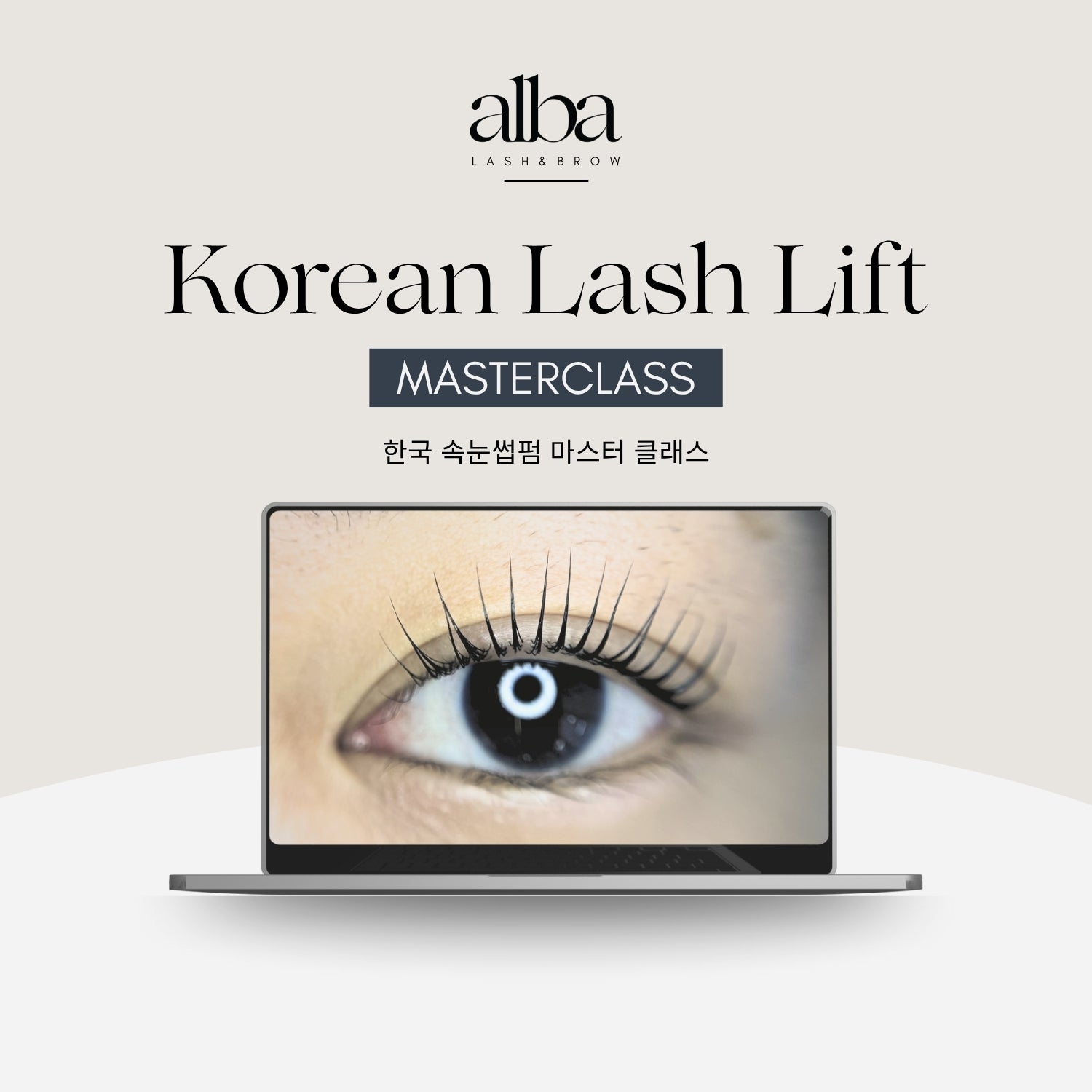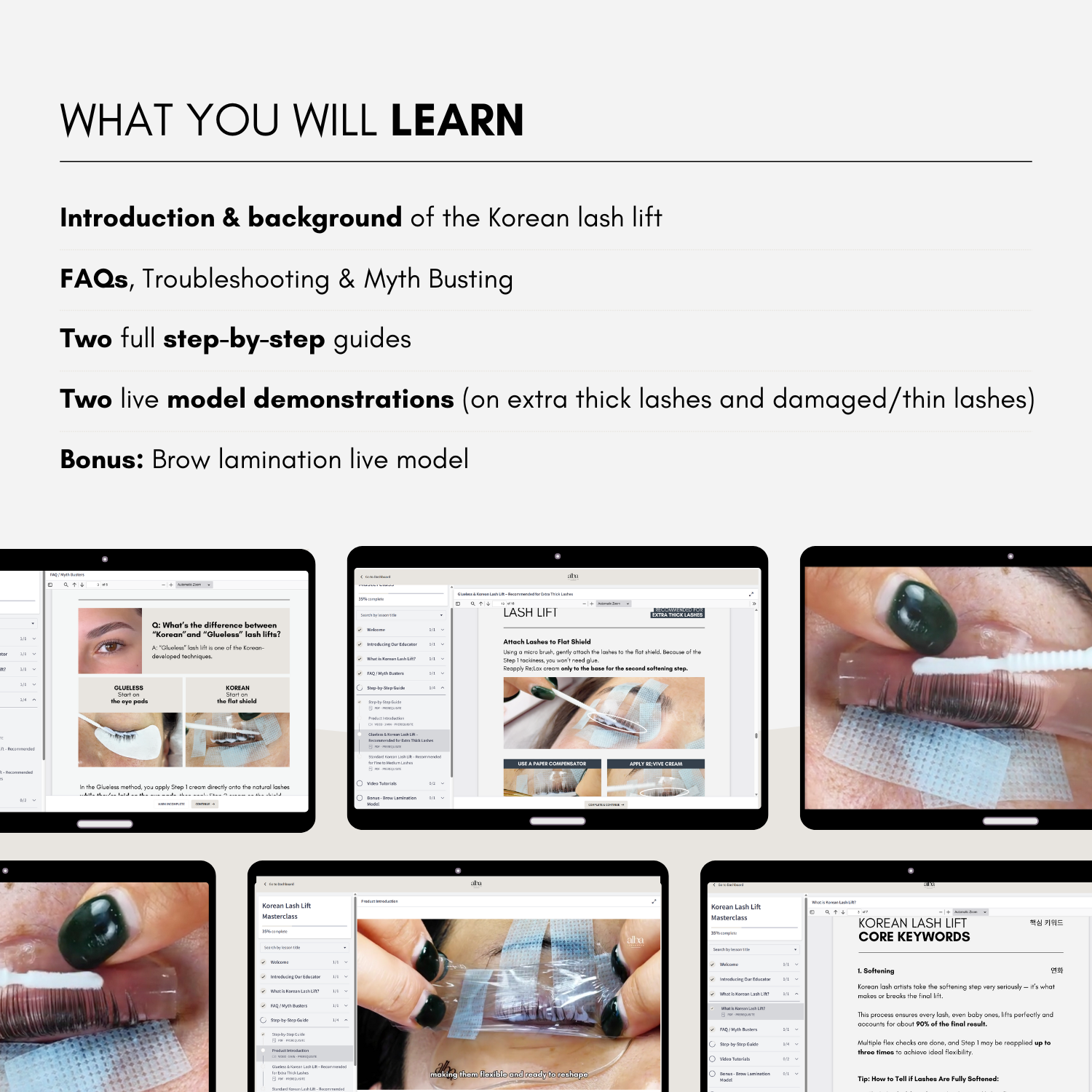9 minute read
KEY TAKEAWAYS
- Check room humidity and temperature: Use a hygrometer to maintain ideal lash glue performance (50–60% humidity, 21–25°C).
- Use fresh, suitable adhesive: Choose a glue that matches your lashing speed and replace bottles every 4 weeks.
- Perfect prep and placement: Clean lashes, ensure proper base attachment (at least 2mm), and isolate lashes to avoid stickies.
- Mind lash weight and aftercare: Don’t overload natural lashes and make sure clients follow care instructions post-treatment.
It’s every lash artist’s nightmare: you get a message from a client in the middle of the night, saying ‘All my lashes are falling off! What should I do?!’ We’ve all been there.
Sometimes, it feels like the biggest mystery to find out what went wrong. Was it your application technique? The new glue? The client’s poor aftercare?
We’ve listed a few reasons for poor lash retention and how you can prevent the same thing from happening again in the future.
Retention Checklist
- Temperature and humidity of the lash room
- Choosing the right glue for your lash speed
- Is your lash glue fresh?
- Did you shake your lash glue enough?
- Change the glue dots frequently
- Were your client's natural lashes clean?
- Proper base attachment
- Are you isolating properly?
- Using the right amount of glue
- Are the extensions too heavy?
- Are clients following aftercare instructions?
- Do eyelash extensions suit the client?

1. Temperature and humidity of the lash room
Did you know that temperature and humidity both play a major role in the curing speed of glues?
If the room’s humidity is higher than the ideal level (above 65%), the cyanoacrylate (the main ingredient of your glue) will be overly activated by the excess moisture in the air, which speeds up the curing process. This means the glue may dry even before you apply the extension to your client’s natural lash.
On the other hand, if your workstation is cold and dry - especially during winter - your glue will dry more slowly than normal.
Most lash suppliers will advise you of the ideal environment for their glues. For example, Lash Jungle’s RAPID & SMART Adhesives perform best in 50-60% humidity, and temperatures of 21 to 25°C.

Tip: Use a hygrometer to monitor the conditions in your lash room. Based on its reading, use a dehumidifier, humidifier, air conditioner, heater, or fan to control the temperature and humidity as needed.

2. Choosing the right glue for your lashing speed
Choosing the right glue to match your lashing speed is so important. Take our Glue Quiz to find out which is best for your lashing speed
If you are a beginner using a fast-setting glue, you may not get the best retention, as the glue may dry before you even get started applying anything. Switch to a slower drying glue that gives you enough time to achieve proper base attachment and clean directions.
Lash Jungle's SMART Adhesive offers 2-3 second setting time, which is perfect for both beginner and intermediate lash artists.

3. Is your lash glue still fresh?

- If your lash glue isn’t fresh, your retention is likely to be poor. Some tips for lash adhesive storage include: changing your glue every 4 weeks (as when the bottles are opened, they slowly begin to degrade, absorbing moisture every time you dispense a drop)
- Store your glues in an airtight container in a cool place (which helps to keep them away from direct sunlight and moisture)
- Do not store your adhesives in a refrigerator or freezer
- Remember the shelf life of most glues is about 6 months.
At Lash Jungle, we produce our adhesives fortnightly to ensure the maximum freshness possible. We never sell glues once they pass 2 months after the production date. Make sure you always check the production date on your glues, and never overstock just because they are on sale.
4. Did you shake your lash glue enough?
The main ingredient of lash glue is cyanoacrylate, a thickening agent and a stabiliser. If the glue is not shaken properly (vigorously for 1-2 minute by hand), the balance of these chemicals gets ruined over time. As a result, you’ll use up all cyanoacrylate, which is the most important ingredient to ensure good glue performance. So, remember to shake your glue every time you dispense a drop.
Pro Tip: Try an electric glue shaker! It mixes glue perfectly within 10 seconds, whilst saving you time and effort.
5. Change the glue dots frequently

Yep, still talking about the glue! During the lash application, change your glue dot every 15 to 20 minutes to ensure it doesn’t dry out. Always dip your lash in the centre of the glue dot, not the edge.
Pro Tip: Use glue stickers to easily change your glue dots.
6. Were your client's natural lashes clean?
If your clients’ lashes are covered with makeup or debris at the time of application, the extensions simply won’t last. Always give your clients’ lashes a thorough lash bath using a lash shampoo before application.

7. Proper base attachment
Always check if you have the base properly attached (at least 2mm), without any gaps between the client’s natural lashes and the extension. If your clients are finding that their lashes are ‘popping off’ when they brush or touch them even slightly, incorrect application is likely to be the cause.
Pro Tip: Don’t be afraid to attach lashes from different angles. Try top or side attachment for straight or downward facing natural lashes. For curly and perky natural lashes, attaching from the bottom is the best.

D curl is especially difficult to apply, due to its curly shape. Slightly adjust your wrist inward to get that perfect angle for attachment. If you're a beginner, start with a flatter curl, like B or C.

8. Are you isolating properly?
Make sure that you isolate each natural lash correctly. Don’t attach an extension to multiple lashes, as that could lead to permanent lash damage and early fallout.

9. Using the right amount of glue
Too little glue will result in poor retention, but too much can cause the lashes to stick together. Use a small bead of adhesive for classic lashes.
When using pre-made lashes, dip only the bottom 2mm of the fan in the adhesive.
10. Are the extensions too heavy?
If the extensions are too heavy for your client’s natural lashes, they simply cannot hold the weight, which will result in poor retention.
If you go ahead with the application, you are also risking your client’s lash health. Who would come back to a lash technician who ruined their lashes?
Skip those baby (Anagen) lashes, or apply much thinner or shorter extensions instead, so you give them enough time to grow out.
Especially when dealing with volume lashes, it is very important that you understand how to calculate lash weights, considering the dimension and diameter of the fan. For example, 1x 0.15 classic lash weighs the same as a 9D 0.05 volume fan.
If you’re not sure, refer to the chart below:

11. Are clients following aftercare instructions?
Sometimes, it may not be your fault after all, but rather your clients’ poor aftercare routines.
Do you provide your clients with the proper aftercare tips to your clients? If not, here’s a lash aftercare guide that you can share on your Instagram, or send directly to your clients after their appointments.

12. Do eyelash extensions suit the client?
Before proceeding with application, always check that your clients are actually the right candidate for lash extensions. They may not be suitable if they:
- Have extremely oily skin
- Have previously had an allergic reaction
- Have sensitive eyes prone to watering, itching, swelling, or redness
- Wear heavy makeup frequently, and use oil-based cleansing products
- Are currently pregnant (as hormone levels may affect retention)
And there you have it! We hope that this ultimate retention guide will help you to avoid complaints, and achieve optimal client satisfaction. In the end, it’s your and your client’s happiness that matters!
The Lash Jungle Team
xx










